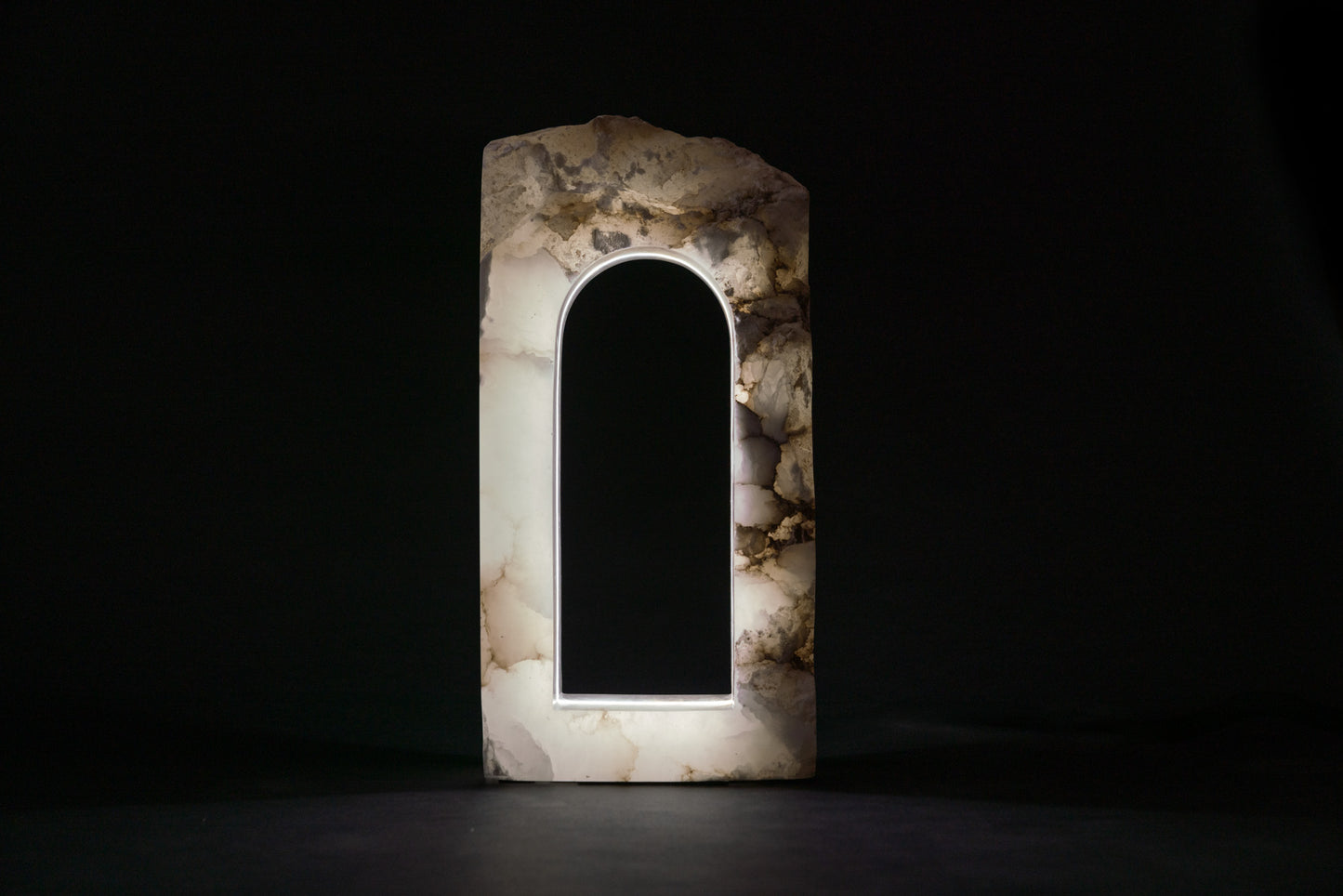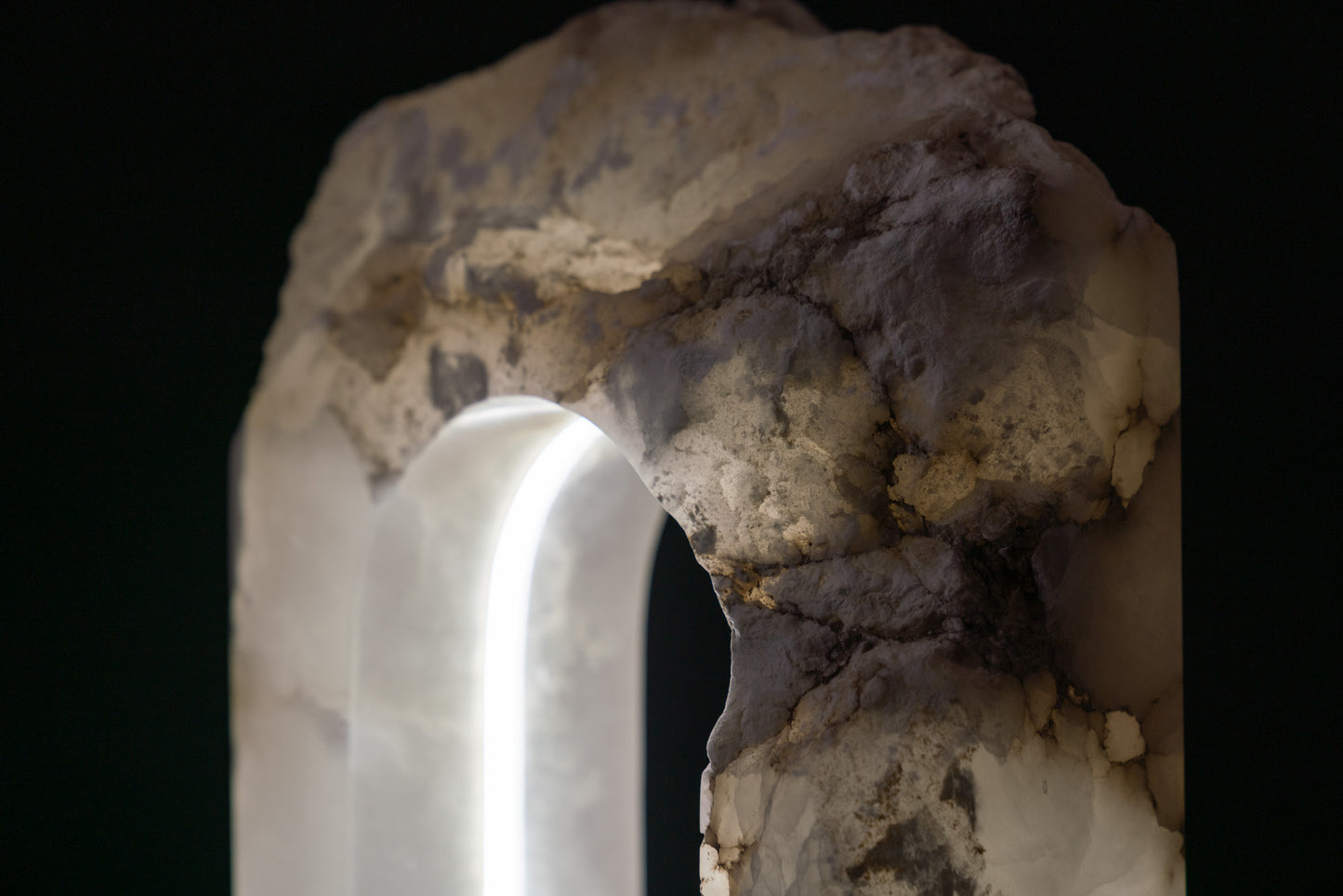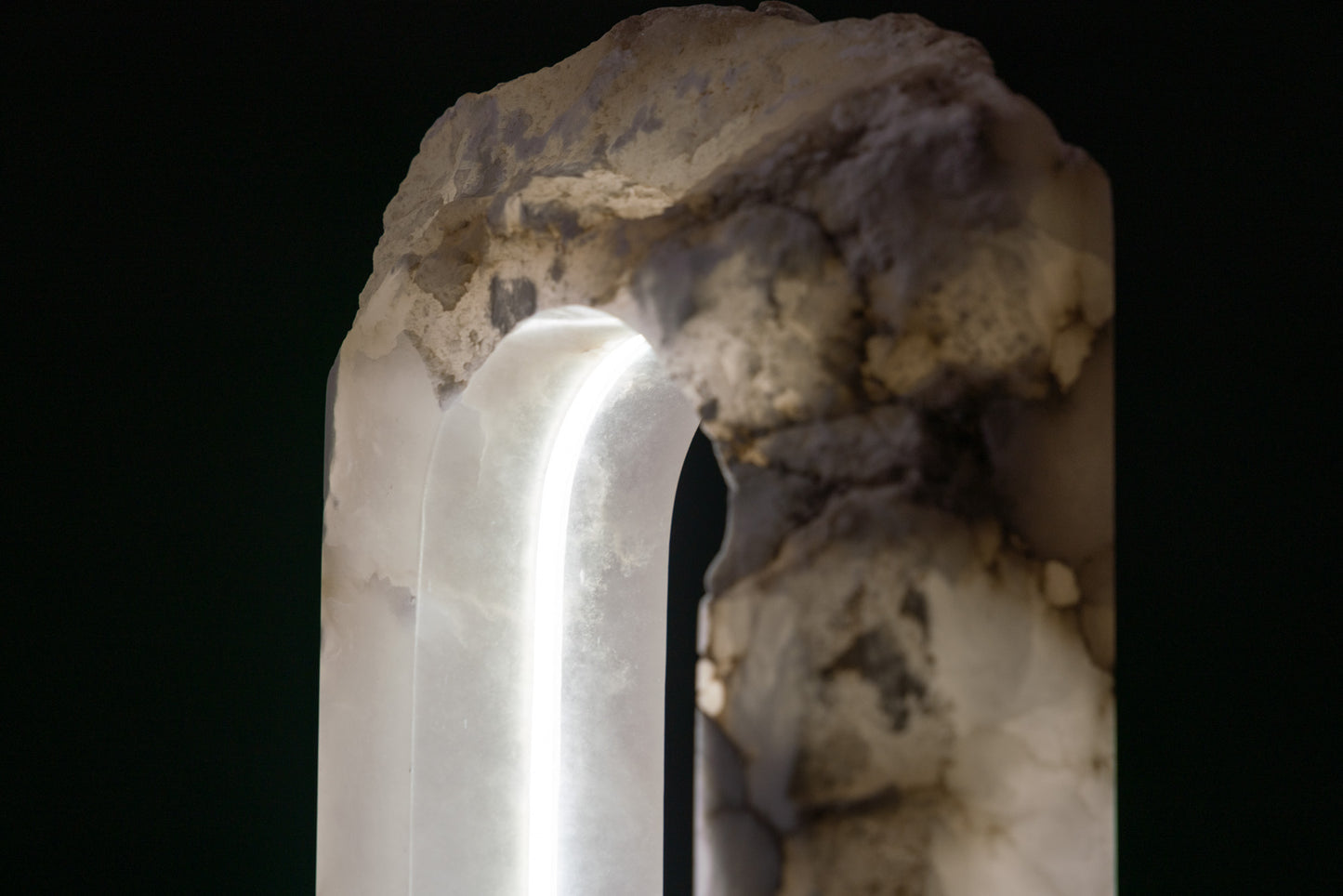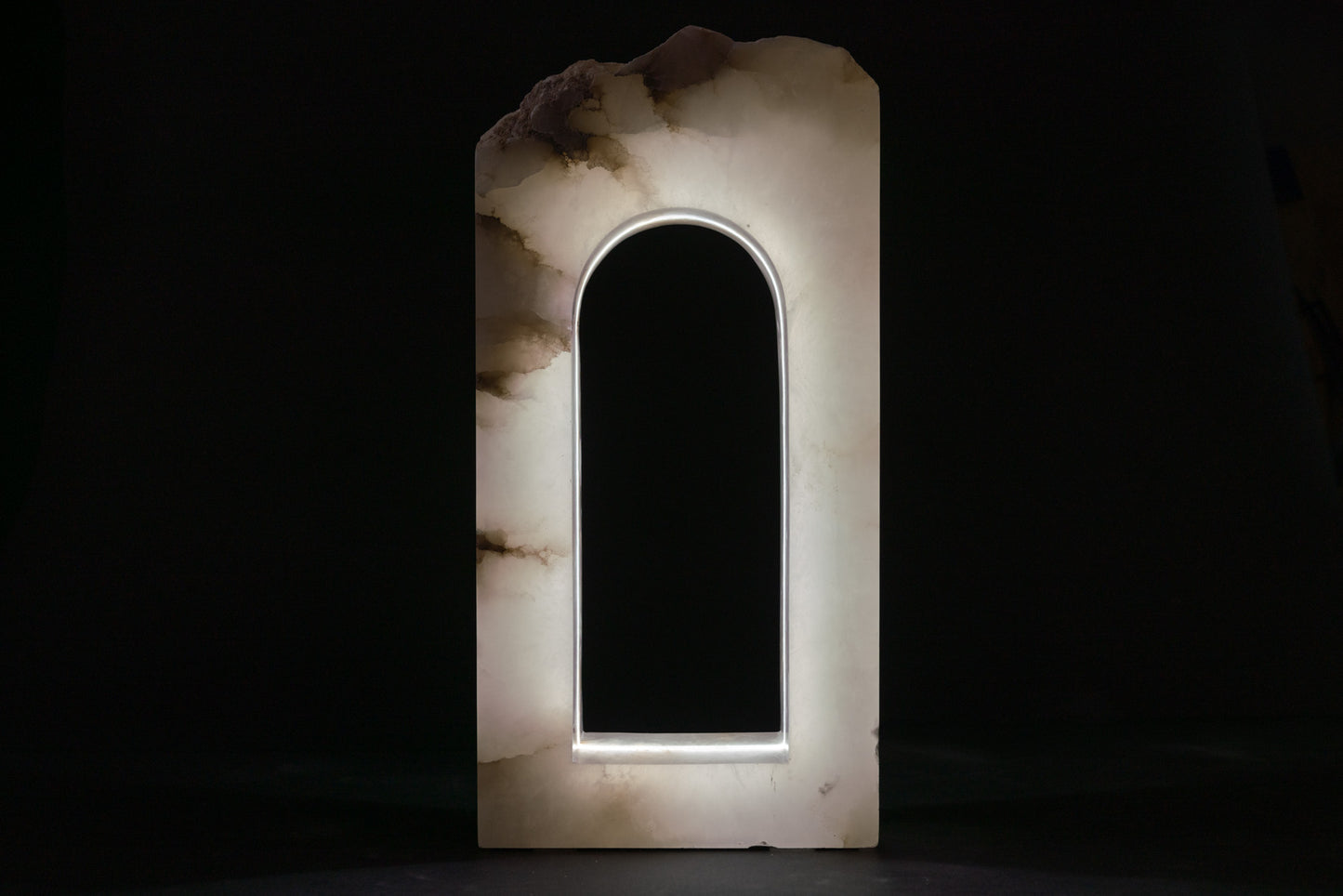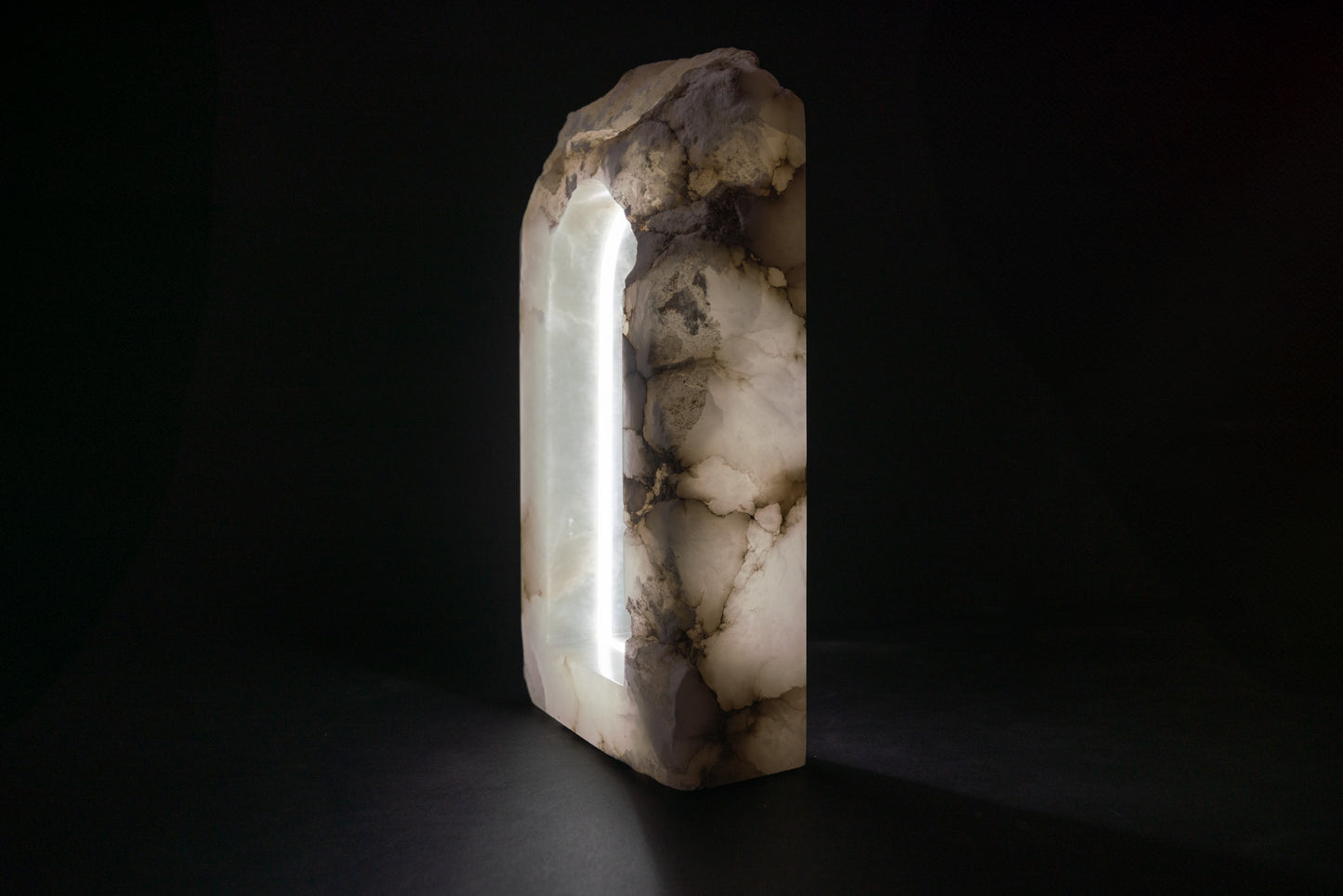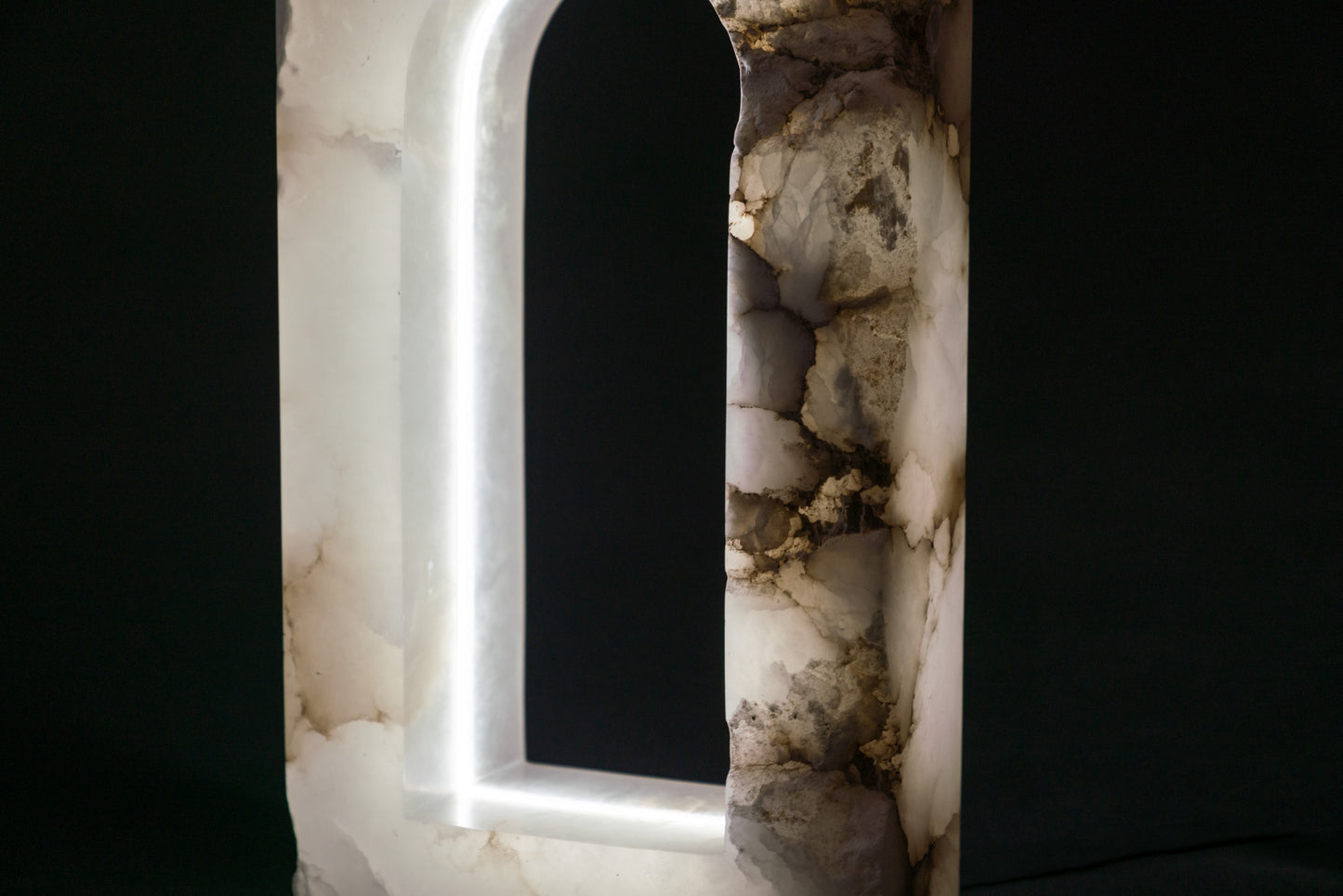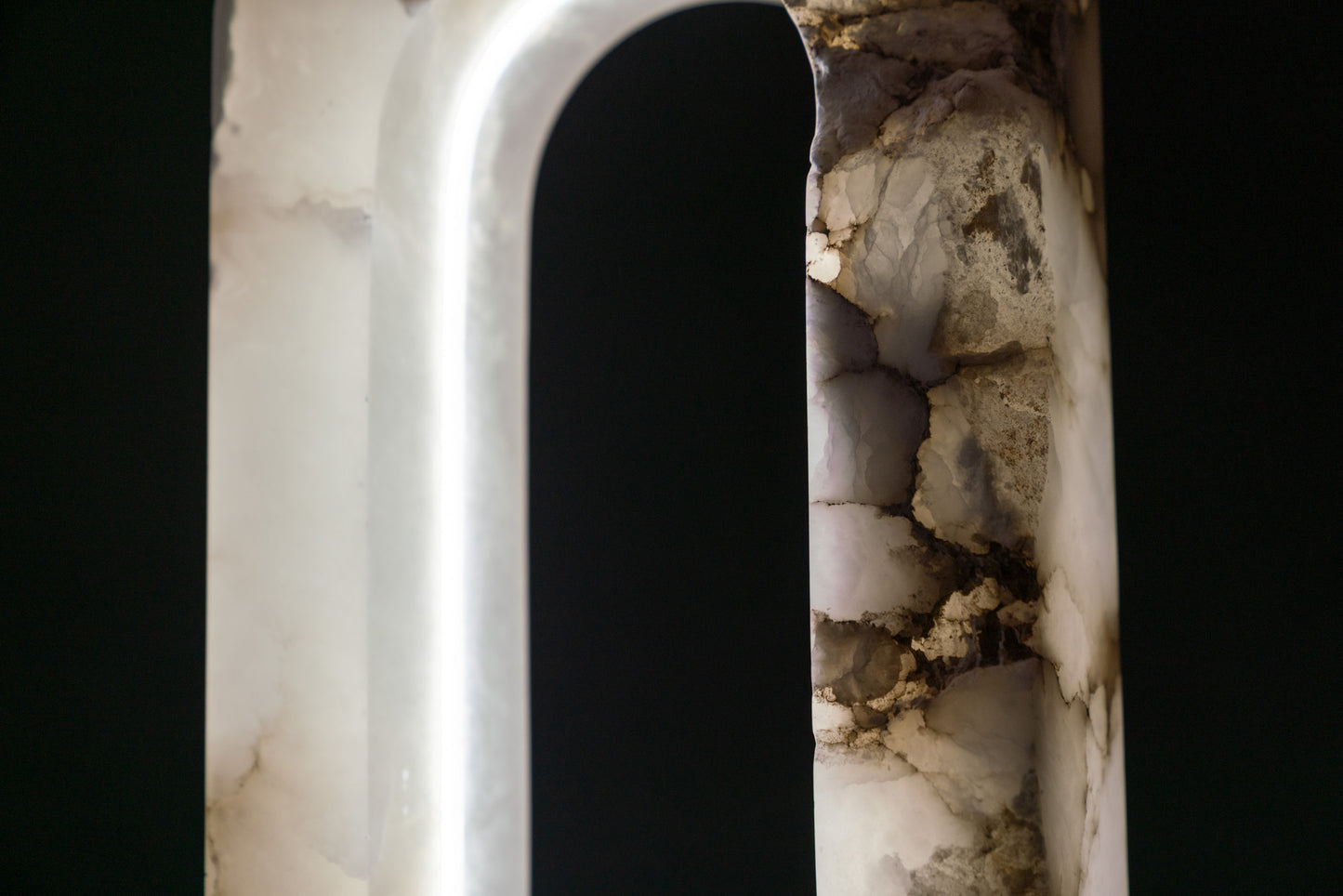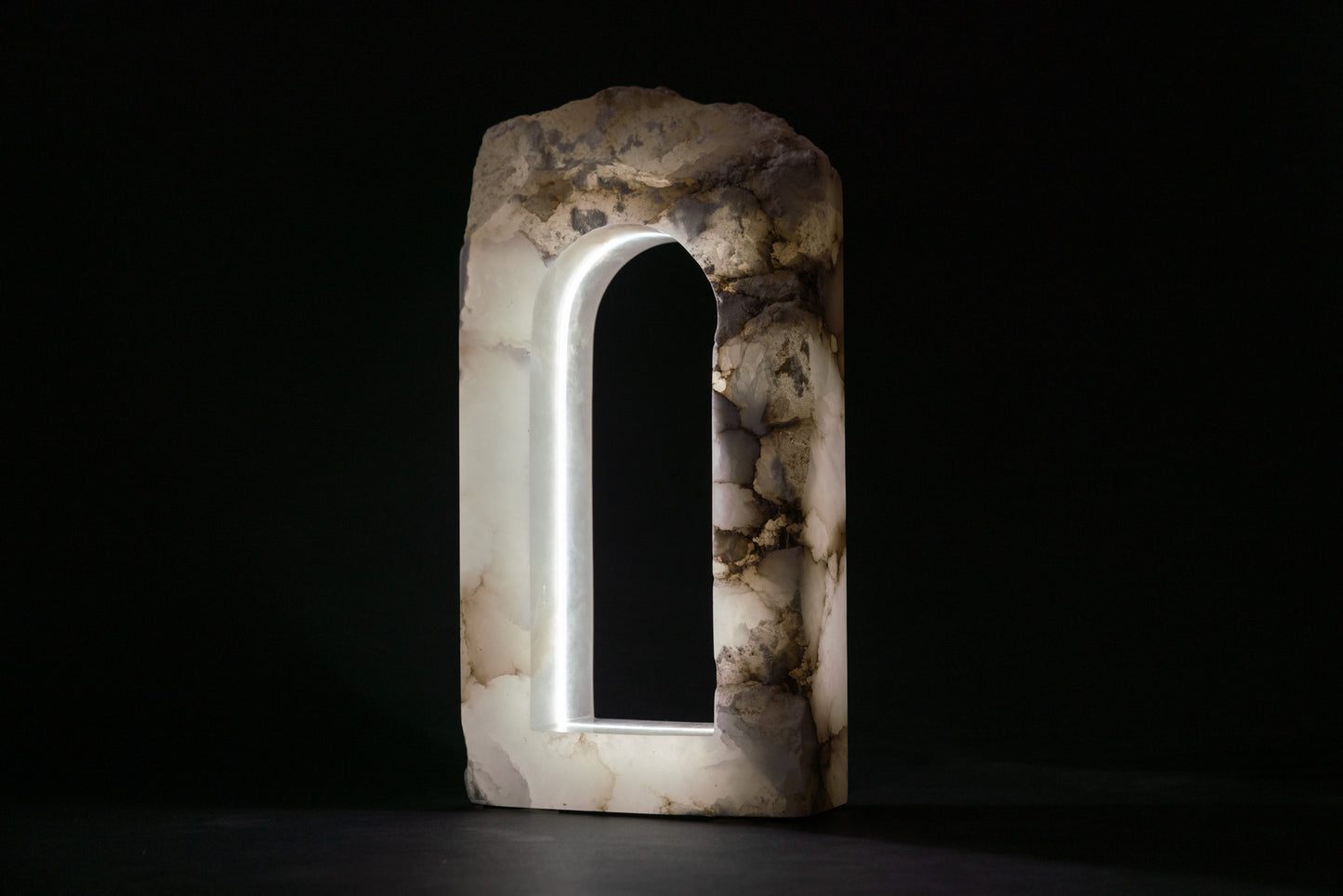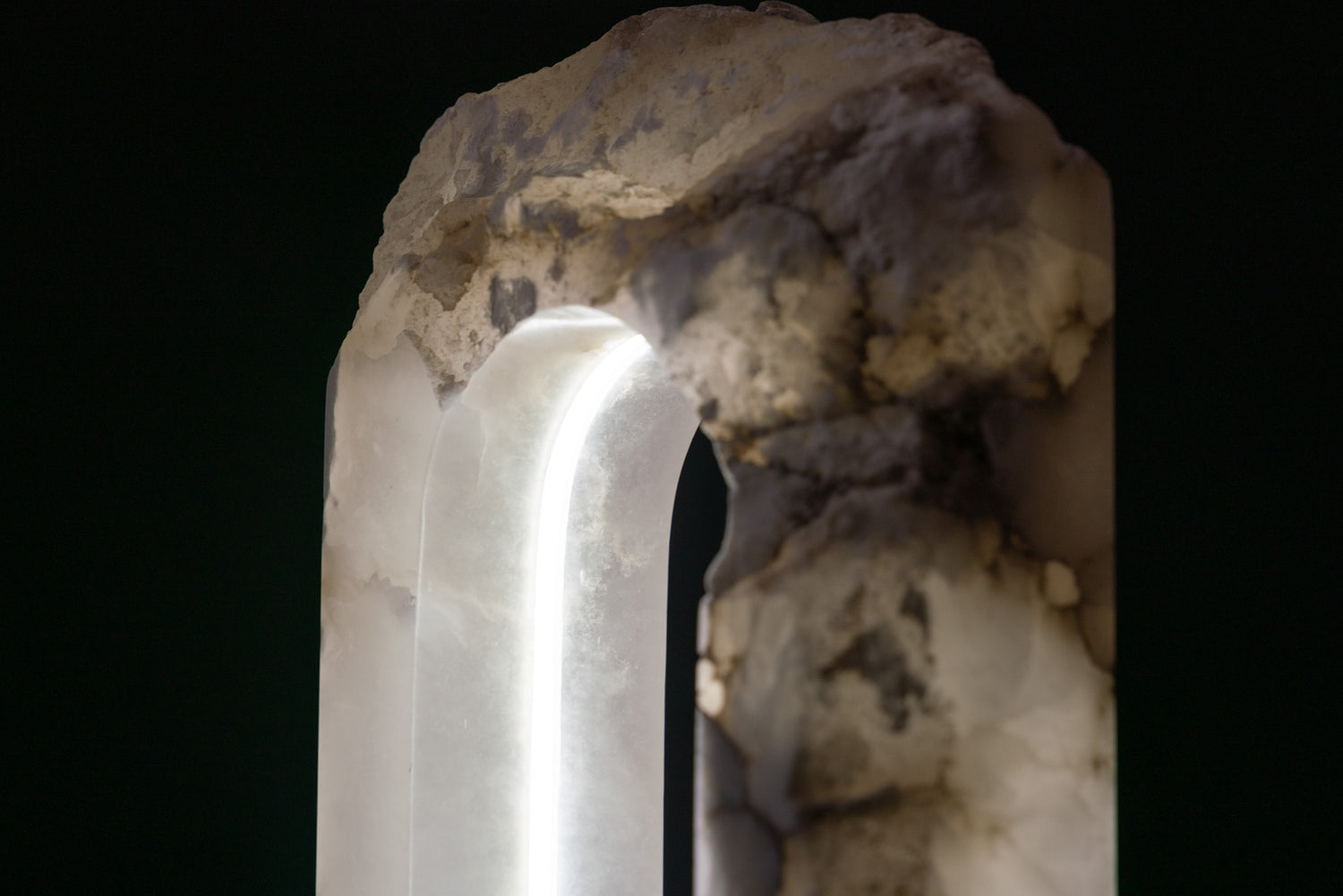
Crafted as a gateway between the seen and unseen, Erebus embodies the primordial essence of transition and transformation. Named after the ancient Greek deity of darkness and shadow, this alabaster sculpture invites contemplation of the thresholds we encounter in both the physical and metaphysical realms.
The arching form, carved from luminous alabaster, reveals intricate veining and organic patterns that speak to the ancient origins of the stone, grounding the piece in geological timelessness. At the heart of the arched threshold, a radiant band of light pierces the alabaster, creating a striking contrast between the material's natural opacity and the ethereal glow emanating from its core. This interplay of light and stone suggests a bridge between realms—a portal where the terrestrial meets the celestial.
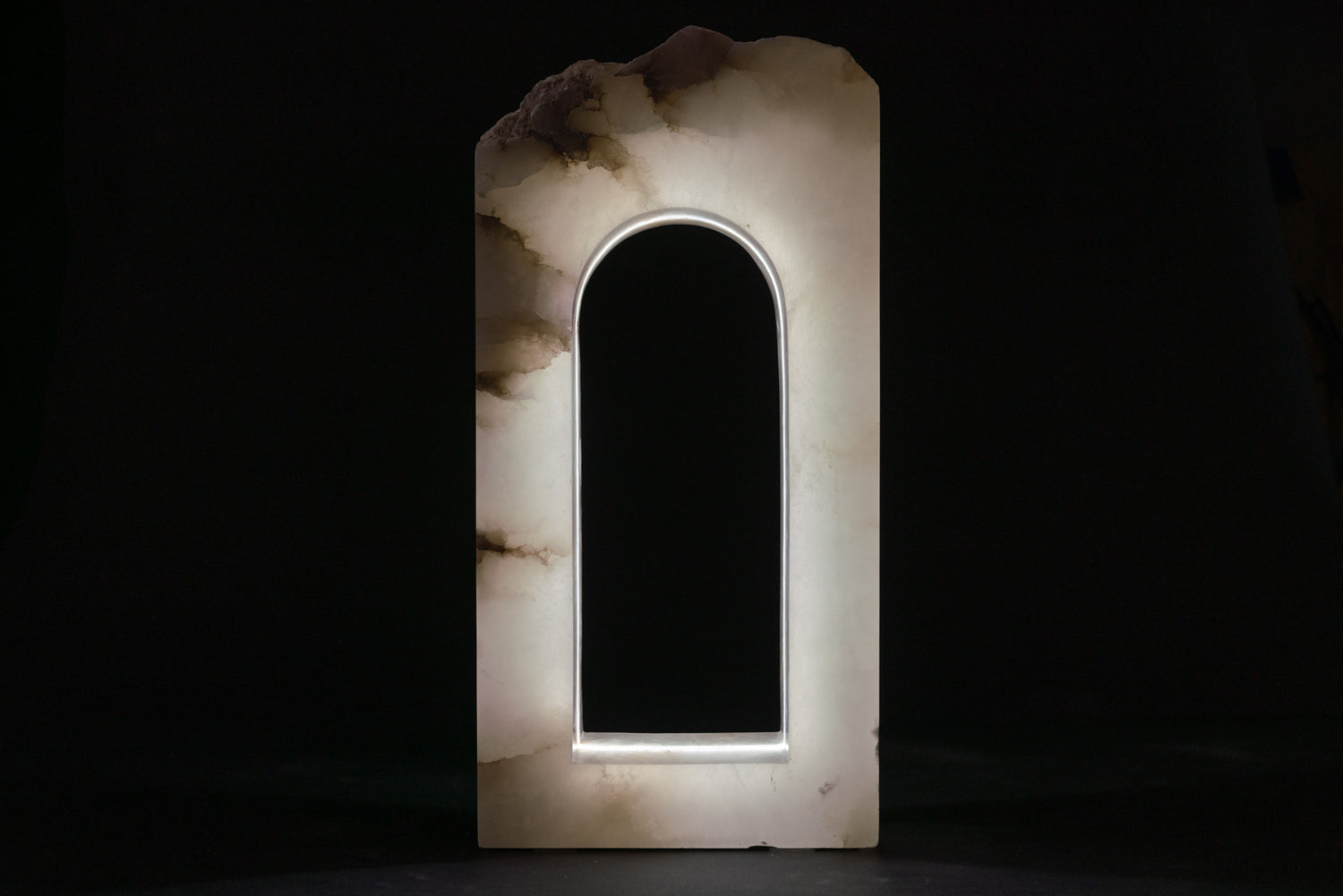
In mythology, Erebus serves as the liminal space between life and afterlife, light and shadow—a theme mirrored in the sculpture’s glowing band, which invites the viewer to step into the unknown. The illumination within the arch evokes a sense of mystery and wonder, as though the sculpture itself contains the energy of the cosmos, guiding us toward deeper introspection.
Standing as a portal to introspection, Erebus challenges us to traverse our own inner landscapes, exploring the boundaries of perception, time, and the universe itself. It is both a relic of ancient earth and a vision of distant worlds, blending history and futurism in a single, transcendent form.
